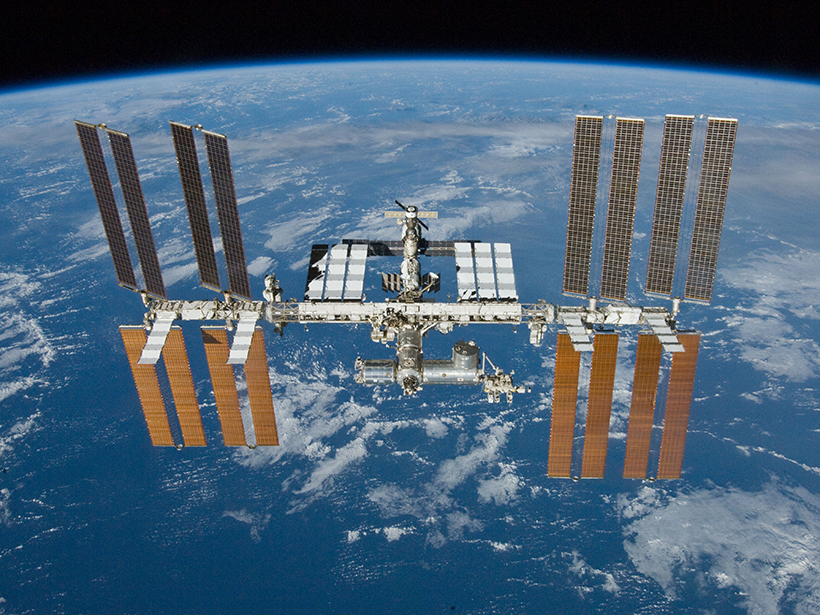Source: Space Weather
Earth’s thermosphere extends between about 90 and 600 kilometers above the planet’s surface and is where much human space activity occurs—the International Space Station usually orbits at an altitude of 400 kilometers, for example. Variations in atmospheric mass density subject satellites orbiting in the thermosphere to a drag force that decays satellite orbits and can even reduce their life spans. Imperfect modeling of this force leads to uncertainties in orbital predictions that create challenges for operators as they attempt to maintain orbits and avoid collisions among satellites.
Despite these concerns, the influences of variations in atmospheric density on orbiters remain poorly understood. Here He et al. use two models—the Drag Temperature Model and the Thermosphere-Ionosphere-Electrodynamics General Circulation Model—to investigate effects in time and space of atmospheric density variations on a circular orbit at 400 kilometers altitude. The researchers also looked at two smaller-scale variations: the equatorial mass anomaly (EMA), which describes a local dip in density at the planet’s geomagnetic equator, and the midnight mass density maximum (MDM), which describes the tendency for atmospheric density to increase at the geographic equator after midnight.
Most notably, the authors show that the effects of atmospheric density are closely tied to the 11-year solar cycle. During periods of high solar activity, modeled orbits were altered by an order of magnitude more than during periods of low solar activity. For instance, when solar activity was high, the EMA could alter the daily orbit of a satellite by as much as 50 meters; when activity was low, the change was only 5 meters. The same pattern held true for variations at 8-hour, 12-hour, 1-day, 6-month, and 1-year timescales.
Across the timescales studied, semiannual variations had the largest effect on modeled orbits, altering them by as much as 800 meters during high solar activity, compared to 300 meters for annual variations. Semidiurnal variations were similarly larger than diurnal ones, with orbits changing during high solar activity by as much as 100 and 50 meters, respectively. The team found that the MDM had a stronger influence than the EMA, shifting orbits by a maximum of 150 meters during high solar activity.
As more orbiters—including multisatellite constellations—are sent into low Earth orbit in the coming years, results like these may become invaluable for planning avoidance maneuvers, estimating mission longevities, and predicting satellite reentries. (Space Weather, https://doi.org/10.1029/2019SW002336, 2019)
—David Shultz, Science Writer
Citation:
Shultz, D. (2020), Atmospheric drag alters satellite orbits, Eos, 101, https://doi.org/10.1029/2020EO139121. Published on 23 January 2020.
Text © 2020. AGU. CC BY-NC-ND 3.0
Except where otherwise noted, images are subject to copyright. Any reuse without express permission from the copyright owner is prohibited.

